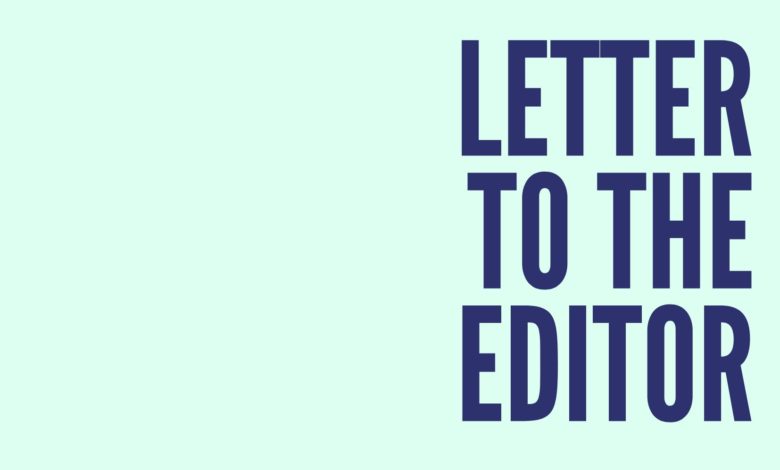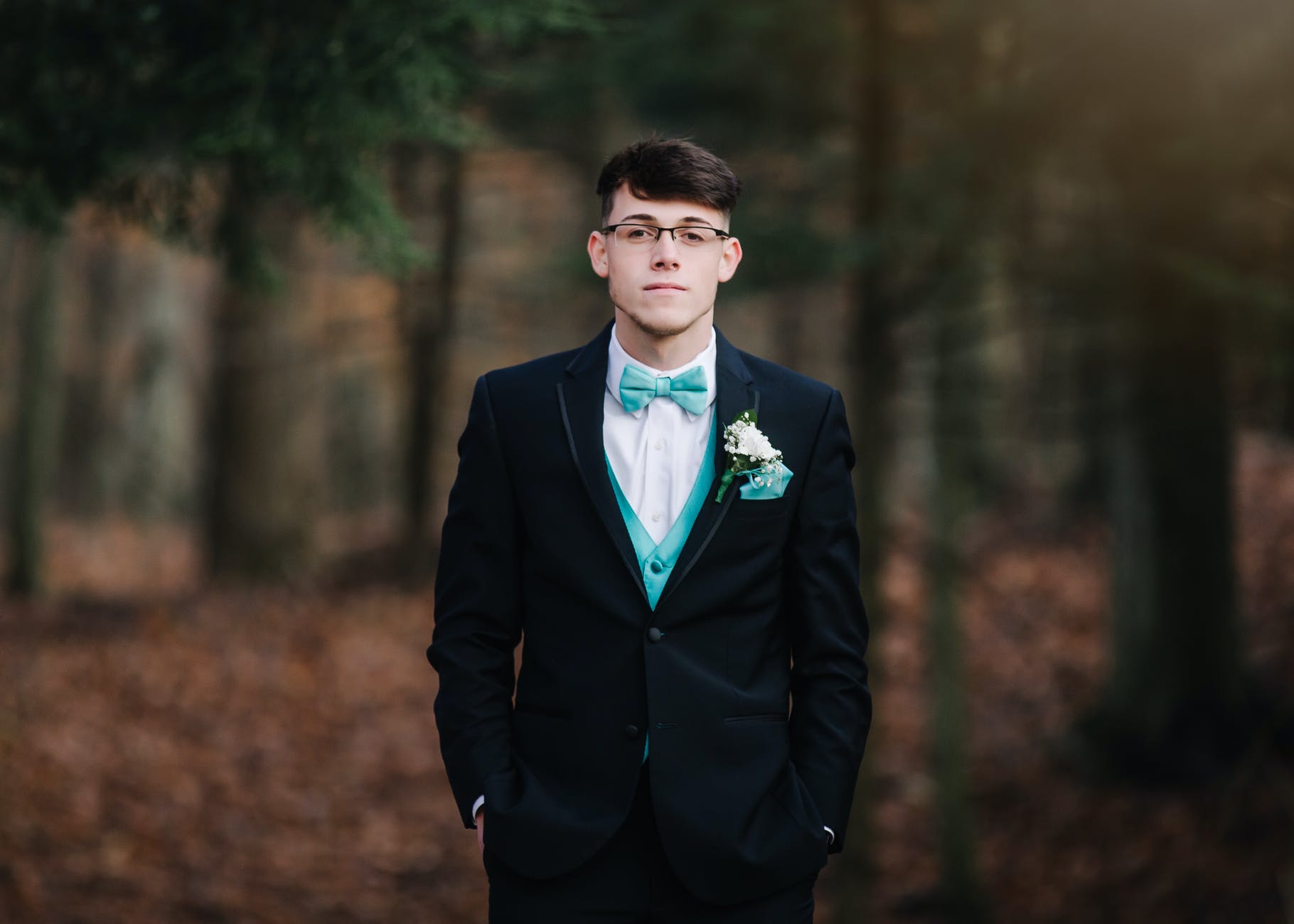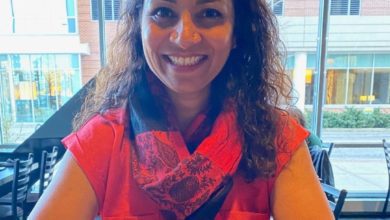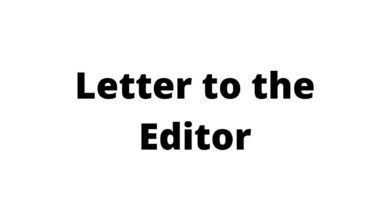Letter to the Editor: Board member asks “What If?”

Hi! How are you? What a strange question that is to answer these days. When I ask it of my friends and family I often hear “fine.” Fine; what a range of definitions that word seems to have taken on lately. Fine can mean, “I’m having a good day today” or “I’m ready to run screaming into the lake.” Some days, I can run that whole spectrum a couple of times.
It would not be a stretch to say that this pandemic will challenge us as a species in ways we have not been faced with before. Times of uncertainty and change often cause fear and anxiety, we are creatures of habit and change for us is often unwanted and uncomfortable.
Change often forces conversations and thinking that stretch us in ways we would rather not be stretched. On top of that, we are all being forced to do this collectively. Our normal sources of guidance and comfort, our friends, families, coworkers, neighbors, teachers and leaders who many times are the rocks we use for stability are experiencing the same challenges and stressors.
In my house we have been forced into some very uncomfortable conversations. My husband is a physician, an OB/GYN to be exact, and we are here in Mahomet, 1,500 miles from all the other members of our families.
As much as I don’t want to have to think about someone in my household getting sick, that is a luxury I cannot afford. Despite all the precautions being taken, my husband is going to come into contact with COVID-19; he already has and I believe he will continue to do so because you simply cannot deliver babies and properly care for pregnant women or new moms from 6 feet away.
For now, we have tested negative, but statistics on exposure and the contagion rate are not something we can ignore. We had to have a talk with our boys; ages 14 and 12 about what might happen if one or both of us had to quarantine or got sick, really sick.
It was a hard conversation to have, it was scary for all of us. The 4 of us talked through all the different scenarios, including the worst-case ones where we would have to figure out where the boys would go and who they would stay with if it comes to that. We asked them to choose some friends in town where they would start if Michael and I both are hospitalized.
We have also had ongoing discussions on what might be done if we need long term plans; how we can get them to family, who could safely come and get them, how they would travel, where they would go in Colorado where they would have the least likely possibility of getting someone else sick.
While we were talking, I could see the fear in their eyes, I could feel the lump in my throat, the tightening in my chest, the tears forming in my own eyes. As a family we sat together, discussing things I would rather not discuss with children, would rather not discuss at all if I’m being honest, and we got through it. We have a plan, we have lots of plans really, because there are several different situations we need to be prepared to act on.
Prepared. The definition of prepared is “properly expectant, organized, or equipped; ready.” What does it mean to be ready? Furthermore, how can you get ready with so much uncertainty and so many unknowns? The truth is, there is probably more than one way to be prepared.
I have College and Masters degrees and a work background in change management and process engineering, what I can tell you from that experience is that being prepared requires not just a shift in how you do things, but a shift in how you think and approach things.
That “properly expectant” part of our definition is a real doozy. In order to do that, we need to be able to challenge what we have always done and imagine scenarios where we no longer do any of those things, but rather reinvent a process entirely. It requires a long list of “what ifs.”
It also requires a rock-solid understanding of your goals and what you are trying to do. Having that understanding is the only way to test the what ifs and know how to prepare for them. Then, on top of that, you need a plan for execution that is nimble and flexible.
There are few certainties in uncertain times, but one of them is that no matter the plan, no matter the decisions, they don’t occur in a vacuum. Things around you will change and that forces you to constantly reevaluate your plan, make sure it still suits your goal and to adjust whenever necessary.
A process for reevaluation and assessment is crucial to any successful change management or preparedness plan. You need to prepare to be knocked off course, to know what actions are required when that happens and then adapt so you can course correct and get back on track.
Recently I saw an extraordinary example of preparedness and leadership in the Governor of California Gavin Newsom. As has been reported, California was the first state to issue a statewide stay at home order. I don’t know Governor Newsom, but I have to assume by watching his actions that he has a rock-solid understanding of his goal – and I would further suppose that the goal is saving as many lives as possible.
If I approach this from a process standpoint, it appears to me that the goal of saving lives allowed Governor Newsom to play out all sorts of “what if” scenarios. What if we close schools? What if we don’t? What if we close stores? What if we don’t? What if people don’t get paid? What if the hospitals are overrun? What if we can’t protect the front line? You get the point.
It seems from the reporting being done that Governor Newsom was able to work through all of those scenarios and “get prepared” and by all accounts experts are suggesting that California has done a good job responding to this pandemic. However, that was not what really caught my attention, it was the action that Governor Newsom took where he shipped 500 ventilators to 7 different states that struck me.
Now I can only imagine that he had many people (perhaps even himself at times) telling him that sending away lifesaving equipment was a crazy notion. I’ve thought long and hard about what word I would use to describe it and I have landed on Courageous.
Courage is defined as “the quality of mind or spirit that enables a person to face difficulty, danger, pain, etc., without fear; bravery.” With so much fear and unknown, Governor Newsom held tight to his goal of saving lives and acted to do so. Not just lives in his State where he has taken an oath to govern and protect lives, but to save lives wherever he could.
I read somewhere that he sent the ventilators and said something (and I’m paraphrasing from memory) that he was certain that if and when California needed the same sort of assistance from those states, he was certain that they would get it. CERTAIN THEY WOULD GET IT, in this time of absolute uncertainty; that unwavering belief that people will do the right thing is what we all need right now. That trust in others and their motives is the ray of hope I would like to cling to.
So, what is the point of having said all of this? I suppose that like everyone else, I’m looking for a way to move through this with grace and dignity. To face the uncertainty and the unknown that lies ahead with a calm, strong preparedness. To call upon my courage and bravery to help settle my fear so that it is not ruling my actions, mind and thoughts.
We definitely have more difficult but necessary conversations coming; as a family, as a community, as local leaders and as a country. Conversations that need to contain many “What ifs.” Knowing that, maybe we can take action to change our approach to those hard conversations. What if we embraced all the “what ifs” so that we may be as prepared as possible for what lies ahead? What if we were willing to come together and hear everyone’s suggestions, thoughts, ideas and rather than letting our fear drive a response that tells us why that is “wrong” we simply added that to our list of “what ifs?”
What if we didn’t let fear force us down a path before we have explored as many options and other scenarios as possible? What if we gave people the benefit of the doubt and assumed that their “what if” was being offered up with the best of intentions? What if we came together to change the way we normally react and tried a different approach? One that had our most courageous self at the forefront.
What if we dared to take this opportunity to imagine a different way? In World War II the Brits used the notion of “Keep Calm and Carry On.” Now you see that Keep Calm and…. Added to everything. Maybe it is time to add a new approach; What if it could be different and better?
What if we lived in a community, country and world where we knew with absolute certainty that when people needed help, they would get it? What if that starts with me? I think I’ll try, care to join me?
Sincerely,
Meghan Hennesy
Mahomet-Seymour School Board Member
Chairman of the Board for Sangamon Valley Public Water District



